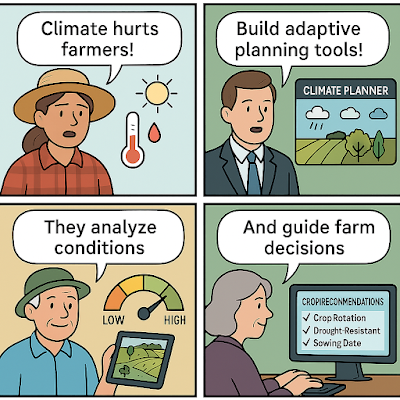How to Build Climate-Adaptive Agricultural Planning Tools
How to Build Climate-Adaptive Agricultural Planning Tools
Climate change is reshaping agriculture, bringing unpredictable weather, pests, and disease risks.
Climate-adaptive agricultural planning tools empower farmers to make data-driven decisions, boosting resilience and productivity.
This post explains how to design, develop, and deploy these tools for a sustainable future.
📌 Table of Contents
- Why Climate-Adaptive Tools Matter
- Key Features for Agricultural Planning
- Data Sources and Analytics
- Technology Stack and Design Considerations
- Implementation Strategies
- Related Blog Posts
Why Climate-Adaptive Tools Matter
Farmers face rising temperatures, erratic rainfall, and shifting growing seasons.
Adaptive planning tools help optimize planting dates, select resilient crop varieties, and plan irrigation strategies.
They also support sustainable practices, reducing environmental impact and improving food security.
Key Features for Agricultural Planning
Important features include weather forecasting, soil moisture monitoring, pest risk prediction, and yield modeling.
Decision support tools recommend actions such as fertilization, irrigation, and harvesting times.
Mobile access ensures usability for farmers in the field.
Data Sources and Analytics
Integrate satellite data, IoT sensor inputs, local weather stations, and historical farm records.
Use machine learning to forecast conditions and optimize recommendations.
Incorporate climate models to assess long-term risks and guide adaptation strategies.
Technology Stack and Design Considerations
Develop cloud-based platforms with scalable architectures.
Prioritize offline functionality and low-bandwidth compatibility for rural regions.
Ensure user-friendly interfaces tailored to farmers’ needs and literacy levels.
Implementation Strategies
Pilot projects with local cooperatives help validate tools and build trust.
Partner with agricultural extension services, NGOs, and governments for training and outreach.
Offer tiered pricing models, including freemium options, to promote adoption among smallholders.
Related Blog Posts
Keywords: climate-smart agriculture, precision farming, adaptive planning, agtech, sustainable farming
